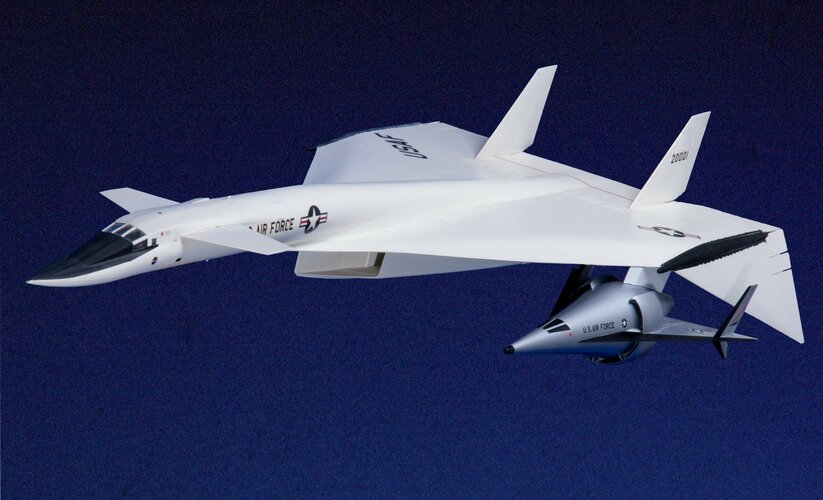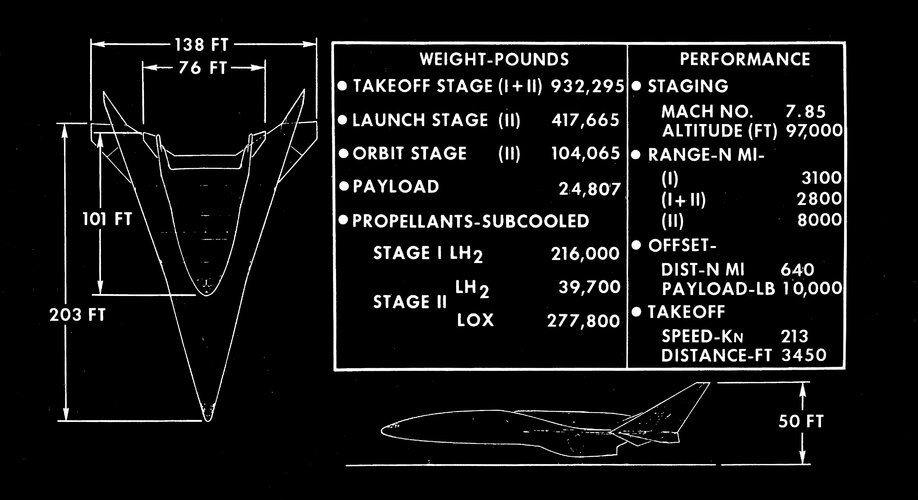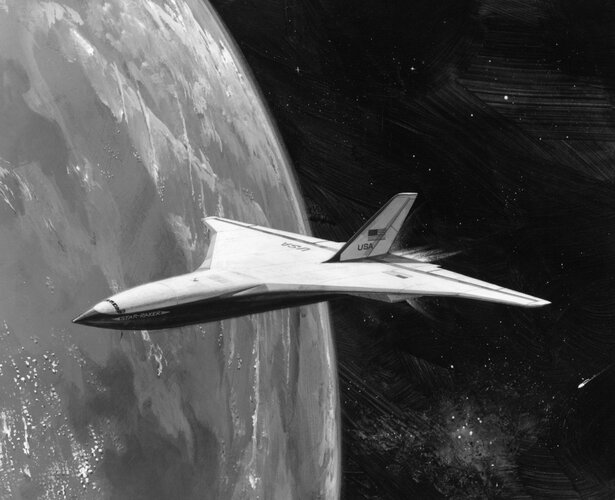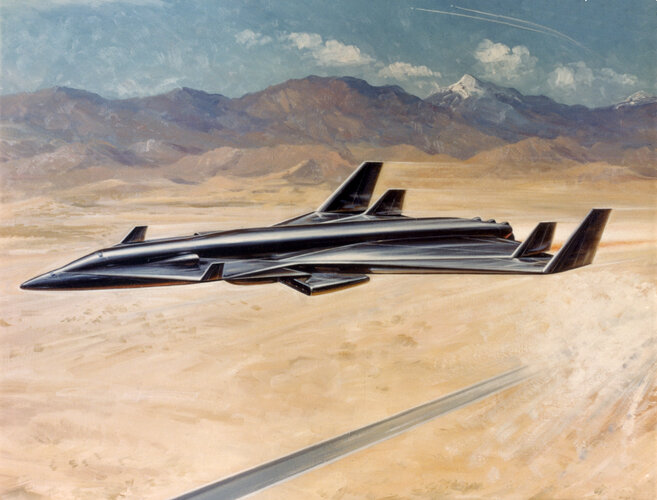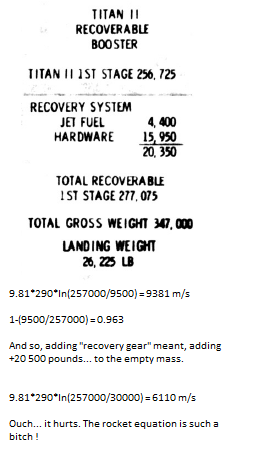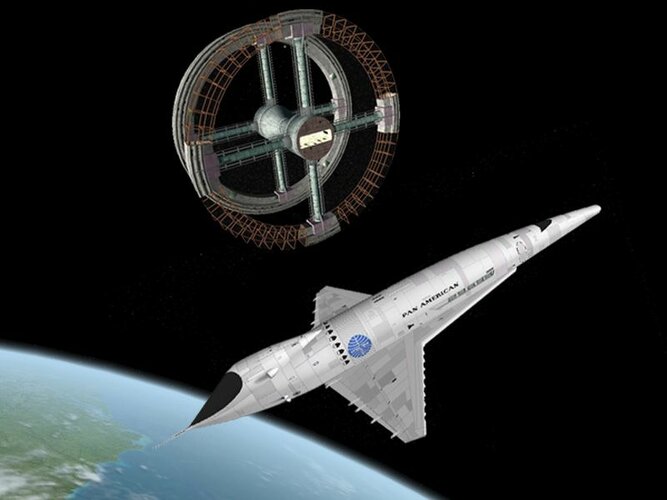Warning: I never, ever pretented to be smarter than the lot. It is not my kind of arrogance or siliness.
This carefully noted
I can't help thinking that most of the designs in that document are
a) aerodynamic quagmires
b) overly complicated (engines, separated stages)
c) few if none of them could actually be build - in their times as much as today.
What I wanted to say is the following. I kind of embraced suborbital refueling as a rejection of what's shown in that document.
I do acknowledge that the said refueling is probably tricky.
But, one of the advantages of going this way is - the simplicity of the basic rocketplane.
Just jets-and-rockets, both with kerosene, plus the oxidizer - out of a very ordinary runway.
Takeoff on the jets, accelerate as fast as it reasonably possible (mach 3 on jets alone, perhaps mach 4 using MIPCC) and then boom, light the rocket - and go into orbit with a single suborbital pit stop: by an identical rocketplane configured as a tanker with a refueling kit.
Looking at the document, I can't see any other way of achieving USAF old RASV-TAV-ALSV dream of the late 70's.
"Runway to orbit !"
To me the most interesting tidbit is the "Titan II recoverable booster".
See attached, plus my little calculations (and my feelings about the rocket equation, too).


